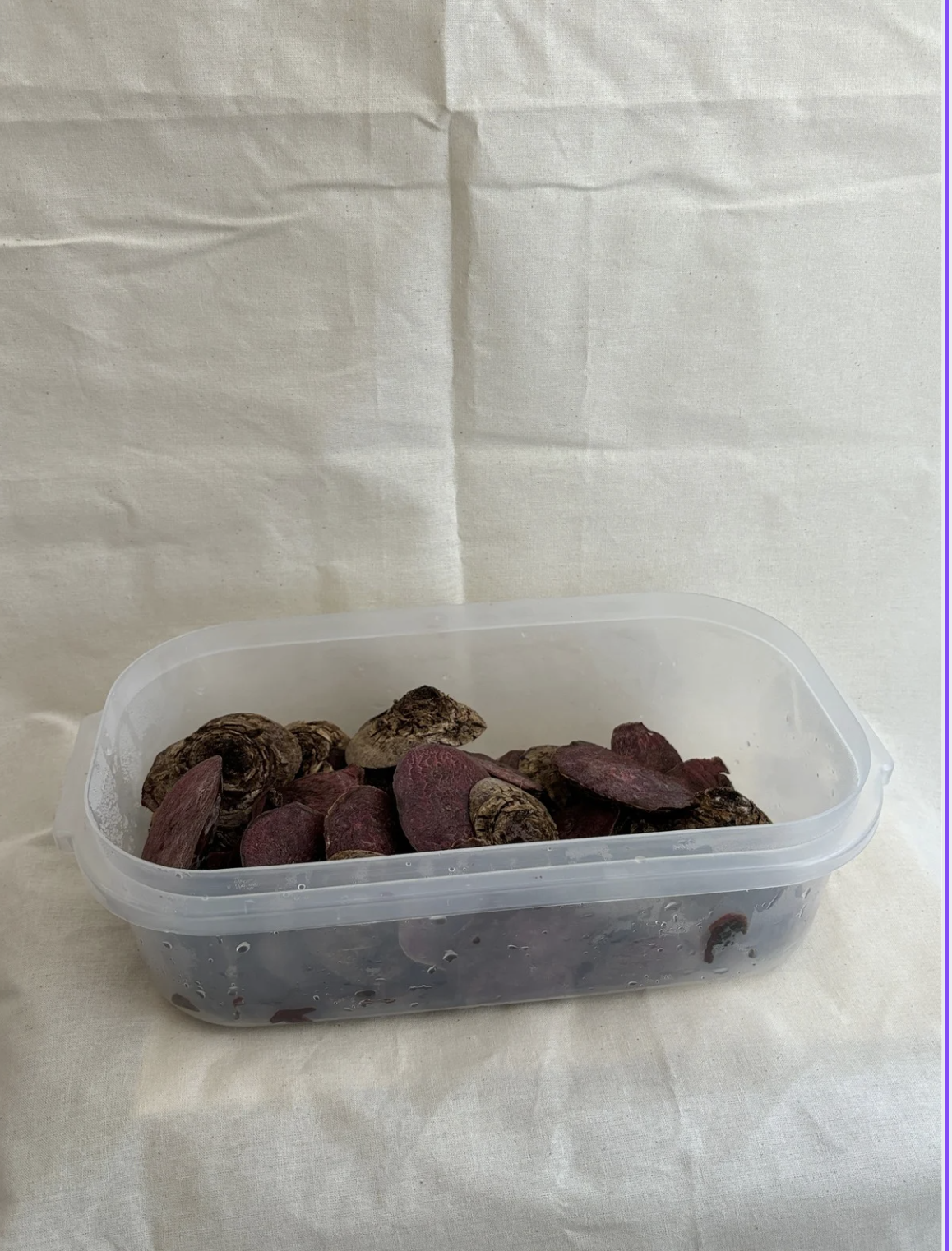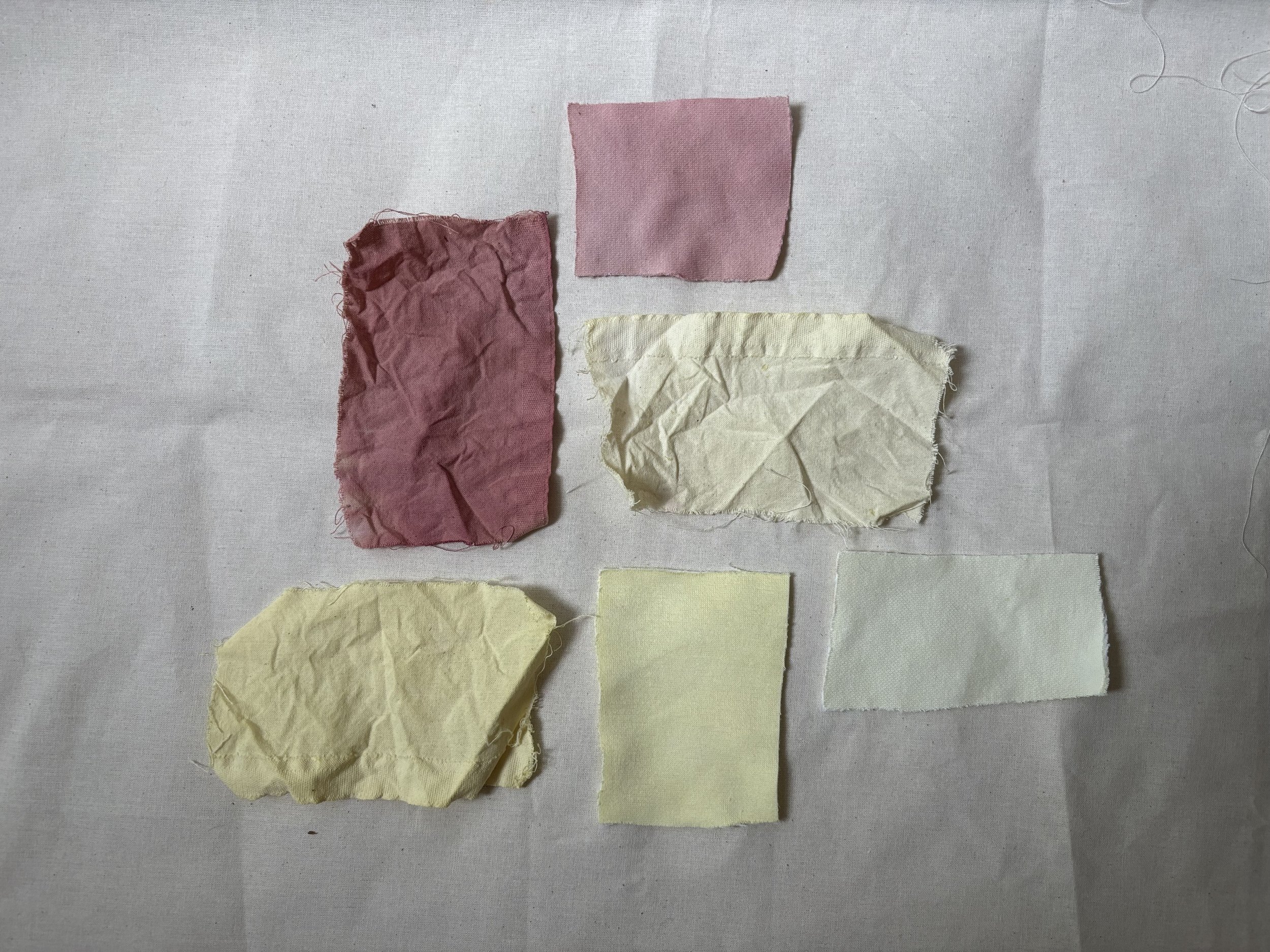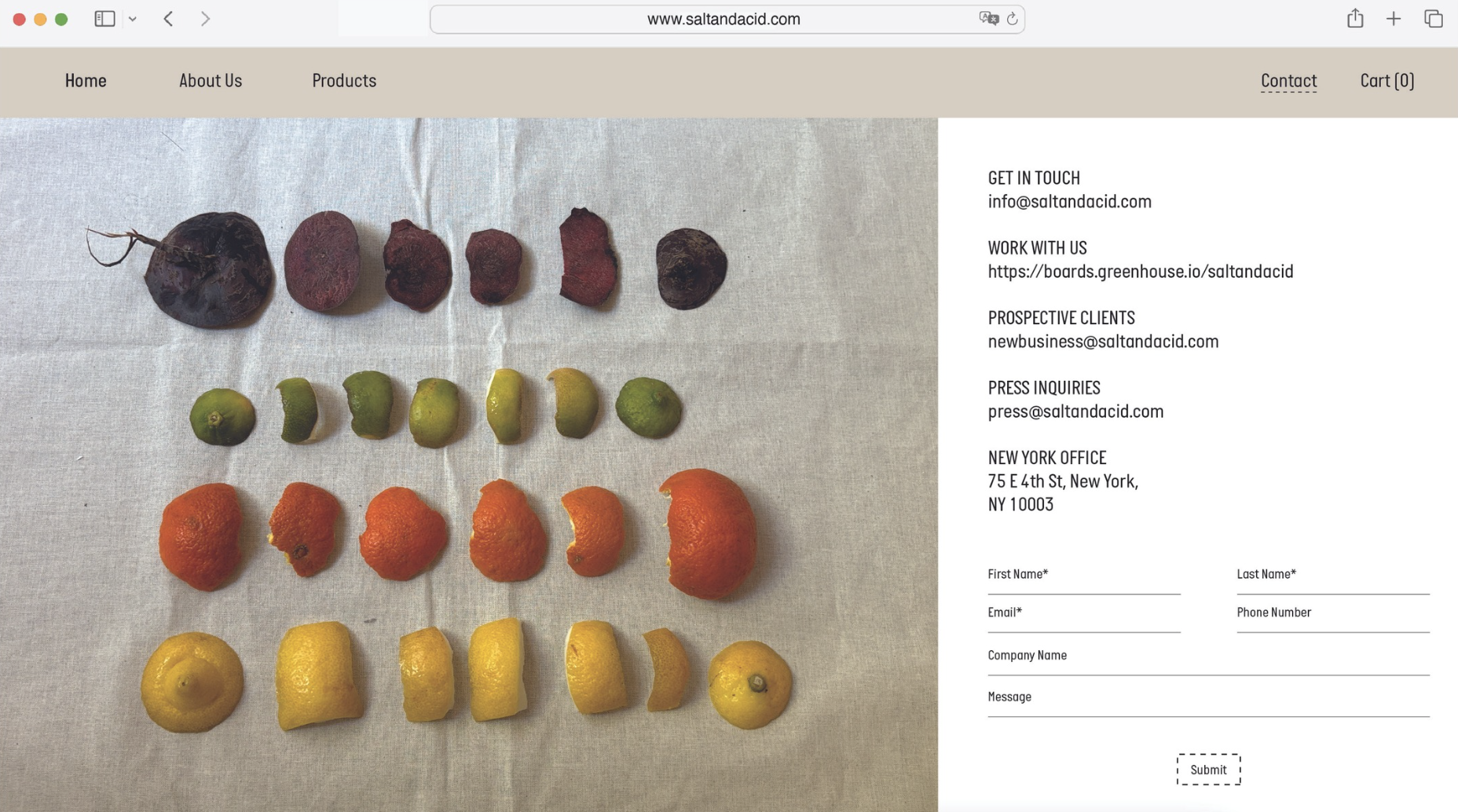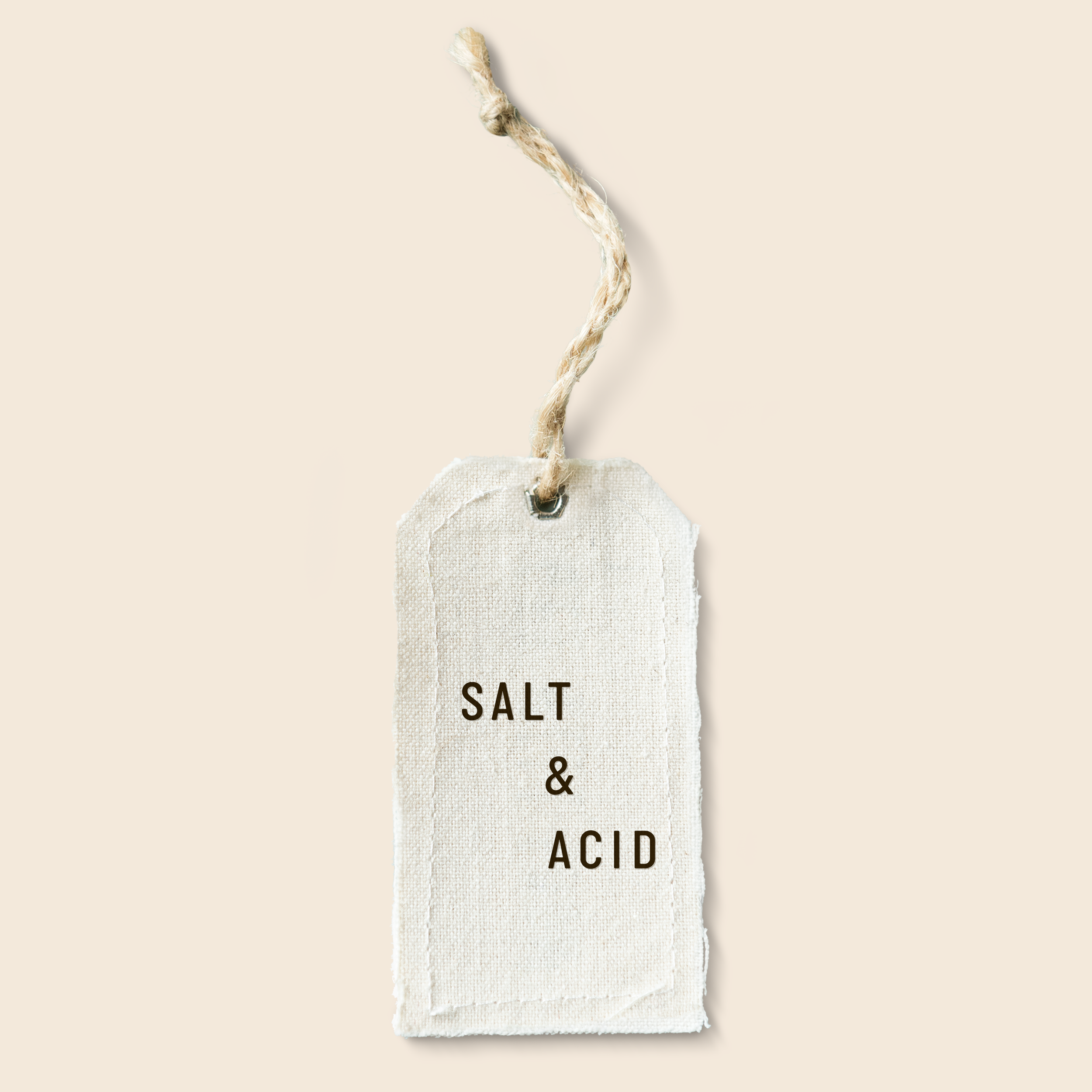Intro
Salt & Acid is a sustainable business concept developed in collaboration with my partner, Pattra Sikkamann, to address the intersection of biodesign and healthy materials within the fashion industry. Our work included creating a comprehensive business model centered on circularity and collaboration, designing a dye prototype using biomaterials, and establishing a proof of concept to demonstrate feasibility. To bring the vision to life, we also developed a cohesive brand identity that embodies the ethos of innovation and sustainability.
Motivation
The environmental impact of food waste is profound. A single 16-ounce serving of cold-pressed juice generates, on average, 3.5 pounds of pulp waste, and an estimated 175,000 tons of this waste end up in landfills each year, contributing to methane emissions equivalent to 200,000 tons of carbon dioxide. Inspired by this, we saw an opportunity to creatively repurpose food waste through natural dyeing as a sustainable alternative to traditional dyes in fashion. Focusing on the large volume of fruit and vegetable peels discarded by juice shops, we developed a concept that combines sustainability with resourcefulness. Partnering with Tom's Juice in the East Village, we sourced their discarded fruit peels to fuel our natural dyeing process and transform waste into something valuable.
Natural dyes offer a sustainable alternative to synthetic dyes, significantly reducing water pollution and environmental harm. Derived from renewable sources like plants and food waste, they are biodegradable, non-toxic, and free of harmful chemicals that contaminate water systems. Unlike petroleum-based synthetic dyes that are water-intensive, natural dyes require less water and can even enhance fabric longevity with antimicrobial properties. Adopting natural dyes helps the fashion industry lower its water footprint and protect aquatic ecosystems, contributing to a more sustainable future.
Our Process
We conducted a competitive analysis of natural dye companies, interviewed industry experts, and mapped the industry to refine our positioning. Through persona mapping and market research, we identified our target consumer. Finally, we created a physical prototype by dyeing test fabric swatches across various materials to demonstrate viability.
Using a simple process—boiling fruit peels in water, straining to extract the dye, and soaking fabrics—we experimented with various fruits and fabrics to explore different color and material combinations.








The Brand
By rescuing and repurposing this waste, we aim to reduce environmental impact.This process not only prevents significant amounts of pulp waste from entering landfills, but also allows us to produce vibrant, natural dyes that are kinder to our planet. Each piece is crafted using deadstock fabrics, and we also sell the natural dyes themselves, empowering brands to create their own sustainable pieces.
Our natural dyes embrace the passage of time, giving each piece unique character and a story of where it’s been. They will fade and change over time, evolving with you as you grow. This reflects our belief in embracing imperfection and the natural life cycle of materials.
Business Model
The high cost of composting services poses a major pain point, with monthly composting costs averaging $800 compared to $300 for trash, disincentivizing sustainability. Our business model addresses this by offering juice shops a free waste pick-up service, alleviating their composting costs while creating a circular process. The brand also prioritizes building close relationships with local juice shops, supporting small businesses in the community. This approach reduces their financial burden and provides us with free materials that would otherwise go to waste, fostering sustainability and innovation.
We plan to launch by selling our own pieces, starting with deadstock fabric scarves dyed with our natural dyes, showcasing the beauty and potential of our process. Additionally, we will sell the dye itself to fashion brands, enabling them to incorporate sustainable dyeing practices into their production while expanding our impact across the industry.
Brand Identity
Our core pillars of identity—Urban Organic, Sustainable, Gender Neutral, and Imperfection—were shaped by in-depth research and a clear understanding of the consumer we aim to reach. We are committed to creating products that embrace the raw beauty of nature and imperfection while promoting sustainability. These values guide us in crafting thoughtful, inclusive designs that align with the growing demand for authenticity and environmental responsibility.









